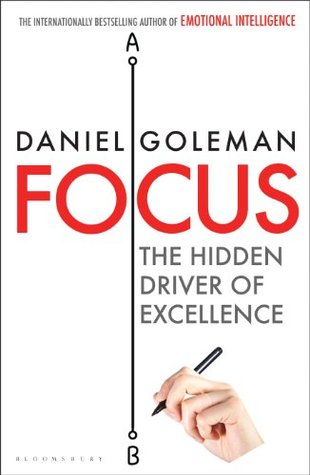More on this book
Community
Kindle Notes & Highlights
A short list of some basics includes comprehension, memory, learning, sensing how we feel and why, reading emotions in other people, and interacting smoothly.
All that can be boiled down to a threesome: inner, other, and outer focus. A well-lived life demands we be nimble in each. The good news on attention comes from neuroscience labs and school classrooms, where the findings point to ways we can strengthen this vital muscle of the mind. Attention works much like a muscle—use it poorly and it can wither; work it well and it grows.
“A few years ago you could make a five-minute video for your presentation at an ad agency. Today you have to keep it to a minute
and a half. If you don’t grab them by then, everyone starts checking for messages.
“continuous partial attention,
“When we get home from work we put our phones in a drawer. If it’s in front of me I get anxious; I’ve just got to check it. But now we try to be more present for each other. We talk.
There are two main varieties of distractions: sensory and emotional. The sensory distractors are easy: as you read these words you’re tuning out of the blank margins surrounding this text.
Since focus demands we tune out our emotional distractions, our neural wiring for selective attention includes that for inhibiting emotion. That means those who focus best are relatively immune to emotional turbulence, more able to stay unflappable in a crisis and to keep on an even keel despite life’s emotional waves.
The power to disengage our attention from one thing and move it to another is essential for well-being.
We learn best with focused attention. As we focus on what we are learning, the brain maps that information on what we already know, making new neural connections.
“deep reading,” which requires sustained concentration and immersion in a topic rather than hopscotching from one to another, nabbing disconnected factoids.9
Deep thinking demands sustaining a focused mind. The more distracted we are, the more shallow our reflections; likewise, the shorter our reflections, the more trivial they are likely to be.
“All of us are smarter than any one of us.
One key to more flow in life comes when we align what we do with what we enjoy, as is the case with those fortunate folks whose jobs give them great pleasure. High achievers in any field—the lucky ones, anyway—have hit on this combination.
large group are stuck in the state neurobiologists call “frazzle,” where constant stress overloads their nervous system with floods of cortisol and adrenaline. Their attention fixates on their worries, not their job.
Overloading attention shrinks mental control. It’s in the moments we feel most stressed that we forget the names of people we know well, not to mention their birthdays, our anniversaries, and other socially crucial data.9
our emotions and our motives create skews and biases in our attention that we typically don’t notice, and don’t notice that we don’t notice.
The reign of impulse for many goes beyond overspending and overborrowing to overeating and other addictive habits, from bingeing on Twizzlers to spending countless hours staring at one or another variety of digital screen.
“We have created a society that honors the servant and has forgotten the gift.
It’s not the chatter of people around us that is the most powerful distractor, but rather the chatter of our own minds.
whenever you notice
“The capacity to remain with your attention open in a panoramic awareness,” says Davidson, “lets you attend with equanimity, without getting caught in a bottom-up capture that ensnares the mind in judging and reactivity, whether negative or positive.
“I am what I think you think I am.
self-knowledge begins with self-revelation.
Clarity begins with realizing what we do not notice—and don’t notice that we don’t notice.
on executive attention, which blossoms into willpower and self-discipline—as
kids can have the most
economically privileged childhood, yet if they don’t master how to delay gratification in pursuit of their goals those early advantages may wash out in the course of life.
Executive function includes attention to attention itself, or more generally, awareness of our mental states; this lets us monitor our focus and keep it on track.
“an irresponsible personality” behind “a perfect mimicry of normal emotion, fine intelligence, and social responsibility.”
There are jokes you tell to your best buddies that you should never tell your boss.
“Systems blindness is the main thing we struggle with in our work,
Emotions, remember, guide our attention.
Positive emotions widen our span of attention; we’re free to take it all in. Indeed, in the grip of positivity, our perceptions shift.
“You need the negative focus to survive, but a positive one to thrive,” says Boyatzis. “You need both, but in the right ratio.
“Give him a task and all he saw was the task, not the people he worked with to get it done.” So his learning plan became: “Spend time thinking about how the other person feels.


